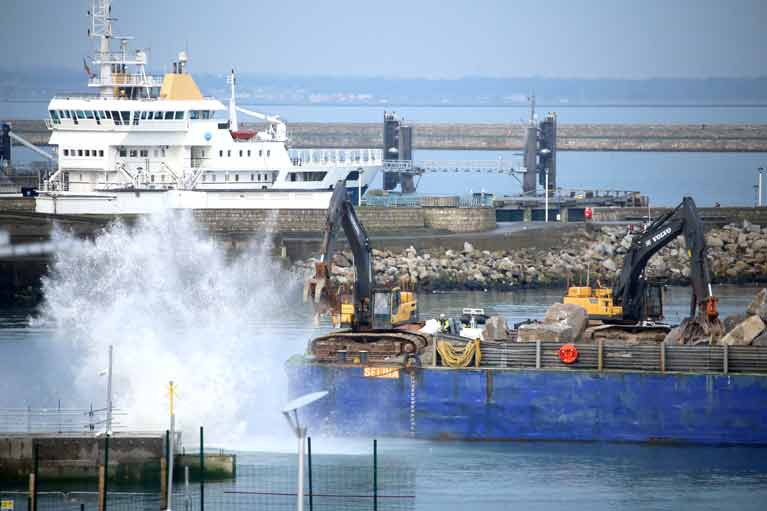Displaying items by tag: coastal protection
Study on Protection of Ardmore Bay, Co Waterford Approved for OPW Funding
A study on coastal protection and flood mitigation for Ardmore Bay, Co Waterford has been approved for additional funding by the Office of Public Works (OPW).
Minister of State with responsibility for the OPW, Patrick O’Donovan, sanctioned Waterford County Council’s application for funding under the OPW’s minor flood mitigation works and coastal protection scheme.
A sum of €19,207 had been agreed to cover additional costs for a study by the Hydraulics and Maritime Research Centre UCC.
“The overall aim of this study was to investigate coastal flood and erosion risk management and develop an appropriate plan to best manage the risks identified to human health, the environment, cultural heritage and economic activity,”the OPW says.
“The study provided a baseline information on erosion and flood patterns and the effects of coastal and flood protection measures. The information gathered will be used for coastal erosion protection measures and coastal flood protection measures where necessary,”it said.
The Minor Flood Mitigation Works and Coastal Protection Scheme was introduced by the OPW in 2009.
It provides funding to local authorities to undertake minor flood mitigation works or studies to address localised flooding and coastal protection problems within their administrative areas.
The scheme generally applies where a solution can be readily identified and achieved in a short time frame.
Under the scheme, applications are considered for projects that are estimated to cost not more than €750,000 in each instance. Funding of up to 90% of the cost is available for approved projects.
Applications are assessed by the OPW having regard to the specific economic, social and environmental criteria of the scheme, including a cost benefit ratio.
“Works that are normally the responsibility of the local authorities will generally not be considered for OPW funding. Where such works would also mitigate the risk of flooding to properties, partial funding may be considered by OPW,”it says.
The OPW says local authorities “must be satisfied that the works will not have a significant impact on flood risk elsewhere”.
Rock Armour Delivery Completed By Barge But Work Remains at Dun Laoghaire Baths Project
#dublinbay - Rock armour delivered for the Dun Laoghaire Baths redevelopment project, has been completed, though further work on the foreshore is underway to position boulders into place, writes Jehan Ashmore.
Around 4,300 tonnes of granite which was transported by barge from Falmouth, in the UK, is to be used to provide coastal protection from erosion at the site and associated newly built jetty on Scotsman's Bay.
Coastal works involved the barge Selina which self-discharged the rocks onto the foreshore, while under the assistance of tugs Husky and MTS Indus. Originally the delivery of rocks to the site along Newtownsmith was to have taken a fortnight, however weather conditions hampered such efforts.
 Making a splash - The Barge Selina deposits rock armour in Scotsman's Bay. Photo: Afloat.ie
Making a splash - The Barge Selina deposits rock armour in Scotsman's Bay. Photo: Afloat.ie
The final load of boulders was taken from Dun Laoghaire Harbour to the neighbouring bay and on Thursday, MTS Indus towed the barge back to the Cornish port.
The jetty jutting into Scotsman's Bay at the €10m baths project developed by Dún Laoghaire-Rathdown County Council, involves heavy machinery putting into place the rock armour by forming in layers. As for those lower and inner layers, they will be constructed using locally sourced granite of smaller rock sizes.
In total there is approximately 6,000 tonnes of rock armour being placed.
The public amenity will have changing areas that will provide access to the water's edge for swimmers and at the jetty, landing points for canoes, kayaks and other water sports equipment.
For further details click here on the overall project built by SIAC Construction which is due to be completed in Spring 2020.




























































